Improvement procedures performed by making some operational interventions on facial lines or defects are defined as facial aesthetic surgery . These surgeries, which are performed using many different procedures, can basically be used to make the face younger, more attractive and balanced. All facial aesthetic procedures applied to the eyes, nose, chin, eyebrows, forehead, cheekbones and similar areas and facial muscles are among the medical procedures that must be performed by professional teams and certified clinics.
Increasing age, genetic factors, smoking, frequent weight gain and loss, stress, air pollution and sun rays cause permanent deformations in the skin structure over time. The skin begins to age, sag, and the contours of the facial area begin to lose their clarity.
Although it is possible to clarify the facial contour, plump the areas that have lost volume, and eliminate the signs of aging with non-surgical facial aesthetic applications, depending on the patient’s skin structure, age, and the extent of the complaints, medical applications performed within the scope of facial aesthetics may not always yield the desired results.
Facial aesthetic operations may come to the fore as the only solution to eliminate the changes in the appearance and shape of the face due to aging.
Facial facial procedures, which include procedures such as correcting the sagging appearance on the cheeks and the sagging in the lower jaw area, removing the prominent line between the nose and mouth and the fat accumulated in the neck, clarifying the cheekbones, correcting structural deformations in the chin, removing excess skin on the lower and upper lids, eliminating forehead lines and lifting the eyebrows. Aesthetic operations must be planned individually.
It may be possible to achieve a face that looks younger and has clear lines with facial aesthetic surgeries planned in line with the needs of the patients.
Facial aesthetics consists of a series of operations that aim to eliminate sagging that obscures the contour of the face and/or other organs on the face, eliminate deformations that occur with age on the person’s face, and improve the structure and/or position of the organs on the face. In this article, you can find information about facial aesthetic surgeries and non-surgical facial aesthetic applications.
Facial Aesthetics Prices
Conditions such as the cost of the relevant procedure, the type of intervention, the quality of the materials used, the location of the clinic and the surgeon’s experience are among the determining factors for facial aesthetics prices . Treatments involving surgical procedures typically cost more than interventions that do not require surgery. For example, while the prices of non-surgical facial aesthetic procedures such as botox or fillers are generally lower, higher prices may be encountered for interventions that require surgery such as rhinoplasty. However, male facial aesthetics prices are determined by taking the same conditions into consideration. Aesthetic procedures performed in our country, especially in metropolitan cities, may cause high costs because the results of the procedure are more successful. Additionally, many people from numerous parts of the world prefer aesthetic clinics located in metropolitan cities in Turkey. This situation stands out as evidence of the success and positive results achieved in the sector.
Things to Consider Before and After Facial Aesthetics
Aesthetic problems arising from facial deformations, signs of aging or other reasons can negatively affect a person’s self-confidence and quality of life. Therefore, facial aesthetic methods can contribute to a person’s physical and psychological health. However, there are some important points to consider before and after the facial aesthetic procedure.
- Things to consider before the procedure: The most important of these may be the selection of the doctor and clinic that will perform the intervention. Additionally, the relevant doctor may request some health tests before the procedure. In addition, with the advice of a doctor, the person may be asked to take a break from various medications he or she uses regularly.
- Things to consider after the procedure: It is extremely important to follow the instructions given during the healing process. Especially taking a break from smoking and alcohol use plays an important role in this process. On the other hand, heavy sports, exercise and similar activities may need to be stopped. In addition, regular use of medications added to the prescription after the operation is extremely important.
When factors like these are taken into consideration, all processes of the relevant operation can be overcome with minimum problems.
Facial Aesthetics Types and Applications
Facial aesthetic procedures stand out as one of the most popular surgical operations, especially in recent years. Many problems such as sagging, wrinkles, blemishes and asymmetrical conditions on the face can be eliminated with various interventions. Interventions made in line with the needs determined by individuals can make positive contributions to many social factors, from the individual’s mental state to the level of self-confidence in his life. In addition, it is very important to carry out the relevant procedures after a detailed evaluation together with the doctors to obtain healthier results. Additionally, some people who want to have oval facial features may apply for round face aesthetic procedures.
Applications among the types of facial aesthetics can be listed as follows:
- Rhinoplasty
- Face lift
- Botox
- Filling
- Peeling
- Skin Renewal
- Chin Aesthetics
- Interventions on the Forehead and Around the Eyes
- Eyebrow Lift, Rejuvenation
- Facial Bone Aesthetics in the Elmacık Region
- Lip Fillers
In addition, Hollywood facial aesthetic procedures, which have become widespread in recent years, attract attention as a procedure performed by emphasizing more angular lines.
Aesthetic Operations Performed on the Face
The face area is one of the body parts where signs of aging appear first and most clearly. Removing the deformations that occur on the face due to aging and shaping the organs that have features that disrupt the harmony of the person’s face, regardless of age, are also possible with facial aesthetic operations.
Facial aesthetics, as one of the sub-branches of the Plastic Surgery department, aims to change facial areas that are uncomfortable and cause aesthetic concern in a way that best suits the person and provides a natural appearance. Facial aesthetic surgeries can be applied to a single part of the face or to the entire face. Aesthetic operations performed on the face can be listed as follows:
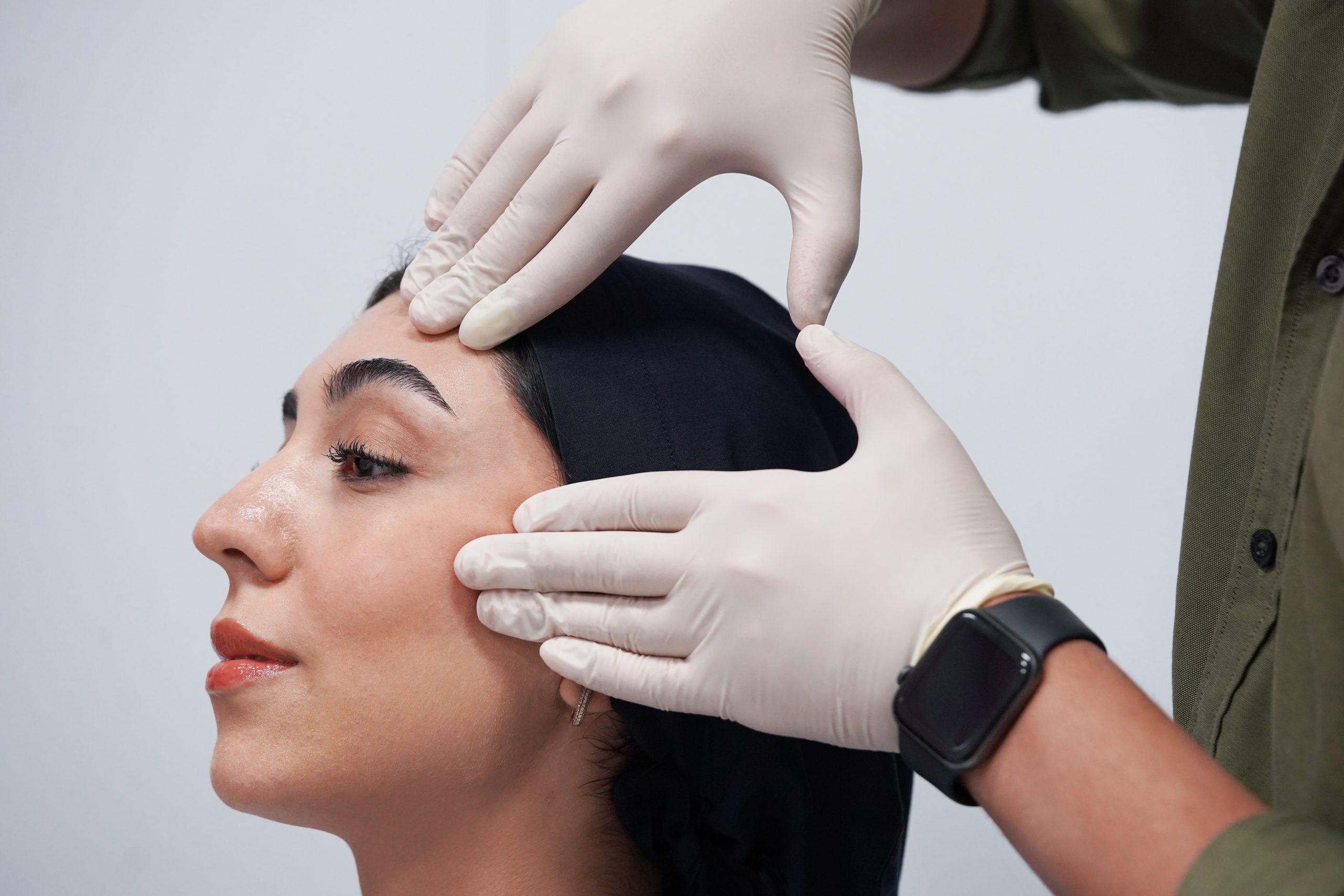
Volumetric loss due to the decrease in bone tissue or soft tissue in the mid-face area may cause the person to have an older and tired expression. Strong and prominent cheekbones are one of the most basic elements of an aesthetic, young and smooth-looking face; It helps emphasize the mid-face area, provides a youthful appearance and is considered an important advantage in terms of aesthetics.
Loss of bone tissue in the cheekbones over time may cause a sunken appearance on the face, thus becoming a matter of aesthetic concern. Cheekbone aesthetics is an operation that is included in the surgical facial aesthetics class. The aim of the operation is to create an ideal facial profile and highlight the cheekbones. Cheekbone surgery allows the person to have prominent cheekbones that match their face using zygomatic implants.
Cheekbone aesthetics can also be performed with different medical applications such as filling and fat injection, which are non-surgical facial aesthetic methods. Unlike cheekbone aesthetic surgery, these procedures are temporary and give the best results in selected patients where signs of aging are not obvious. The operation can be performed alone or in combination with other facial aesthetic surgeries.

Double chin, which occurs as a result of sagging and fat under the chin area, from the chin area to the neck area, can be defined as a deformation that causes the person to look older and overweight. Double chin aesthetic applications can be applied to remove the double chin and reconstruct the lower jaw area, which occurs due to different reasons such as genetic factors, weight gain and loss, and decrease in skin elasticity with aging.
Since double chin aesthetic surgery can be performed with different techniques, the needs and skin structures of the patients must be evaluated during the planning process. In patients whose skin elasticity is preserved, the skin can recover when the fat in the jowl area is removed by liposuction.
However, in cases where there is a lot of fat accumulation in the area and the person’s skin elasticity is not sufficient for recovery, liposuction and Submentoplasty, in which a small incision is made under the chin and the muscles are tightened, or neck lift surgeries, in which excess skin is removed by restructuring the neck muscles and jowl area, may be considered.
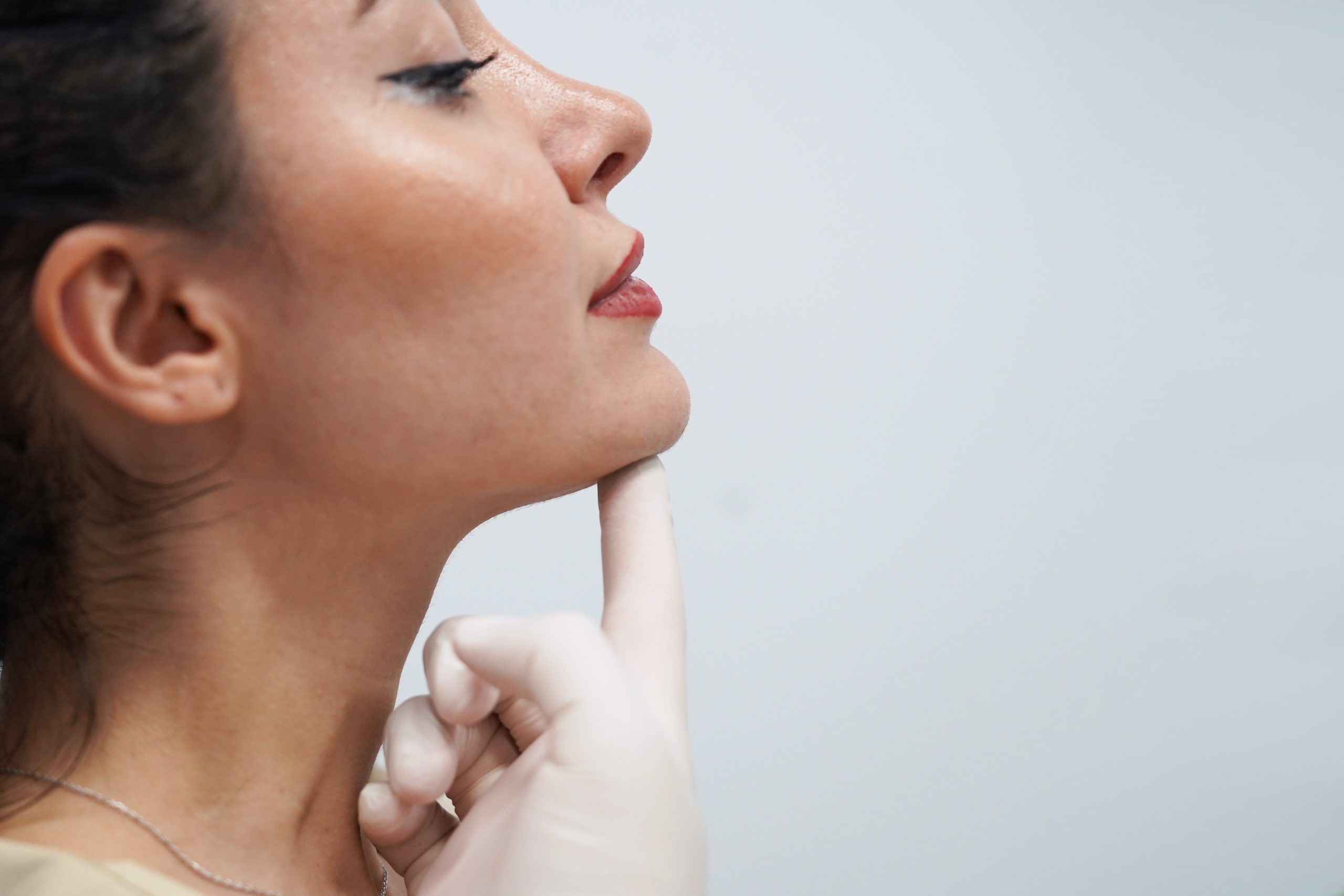
The chin is located in the midline of the face, and due to its position, its shape can directly affect facial expression. Very successful results can be obtained with chin aesthetic surgery performed to improve facial proportions and increase the person’s self-confidence.
Different techniques can be used within the scope of chin aesthetics, also called mentoplasty; The technique to be used is determined by evaluating the patient’s expectations, needs and facial analysis results. A chin that is too large, too small, positioned backwards or forwards can disrupt the harmony of the person’s other facial features.
For example, if a person has a smaller chin than necessary, his nose may appear larger than it is. Within the scope of chin aesthetics , chin implants can be used and jaw bones can be filed. It is also possible to improve the shape of the chin with filler or fat injection, which are among the non-surgical facial aesthetic applications.
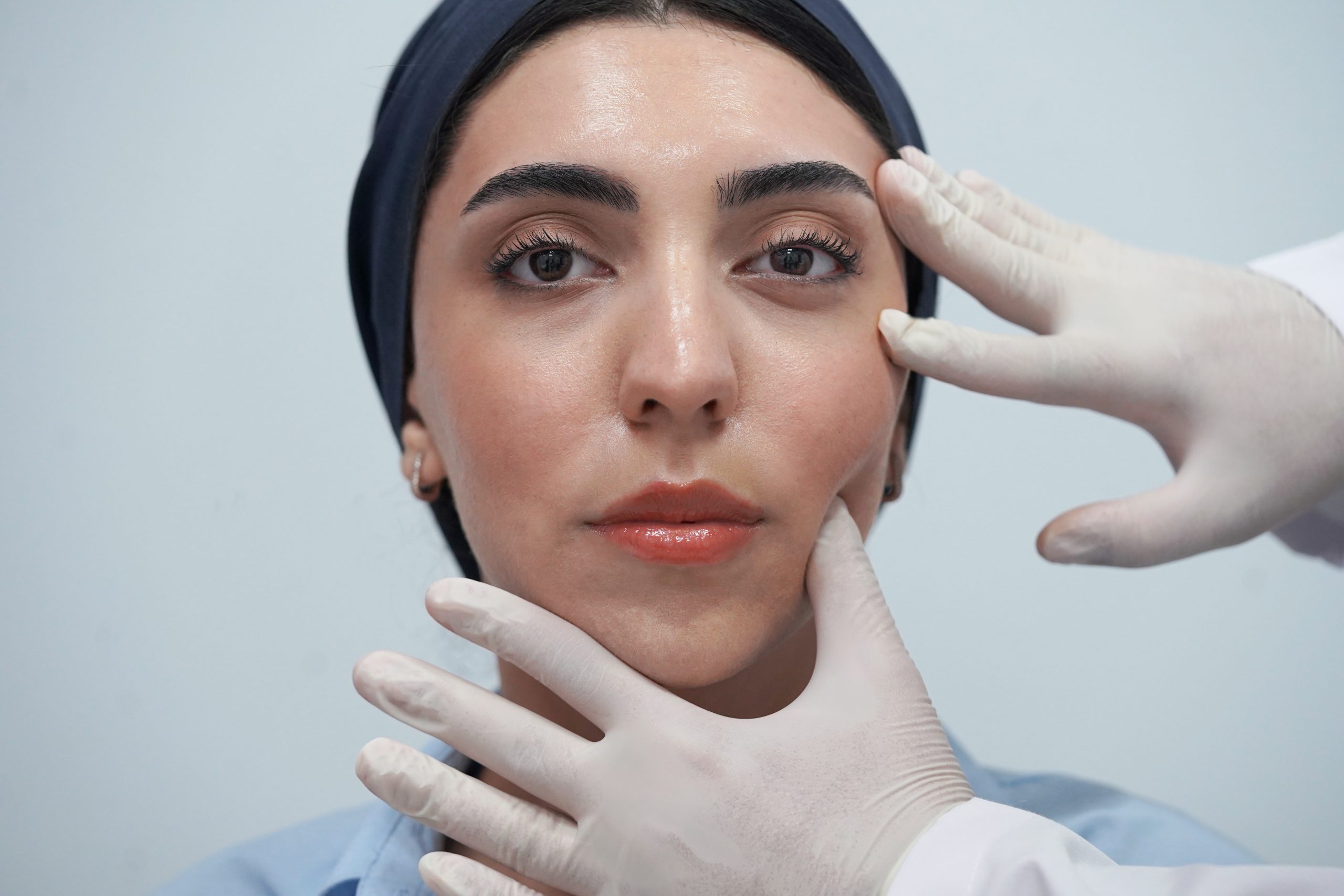
Almond eye aesthetics, which is performed to make the eyes look larger by slightly pulling them up, is also called cantoplasty. Before surgery, which can be performed under local anesthesia, the eye shape is evaluated and the patients’ expectations are learned in detail.
Almond eye surgery, in which the corner of the eye is reshaped and the sagging in the outer corner of the eye is removed and the area is restructured, should not be confused with blepharoplasty. Although lower and upper eyelid aesthetic surgeries are operations in which excess skin is removed to rejuvenate the eye area, they do not change the shape of the eye.
With almond eye aesthetics , the eye aperture is enlarged, the outer corner of the eye, called the lateral canthus, is lifted and the eye area is rejuvenated, while at the same time providing a deeper look. Non-surgical almond eye aesthetics can be performed in selected patients using the rope suspension method.
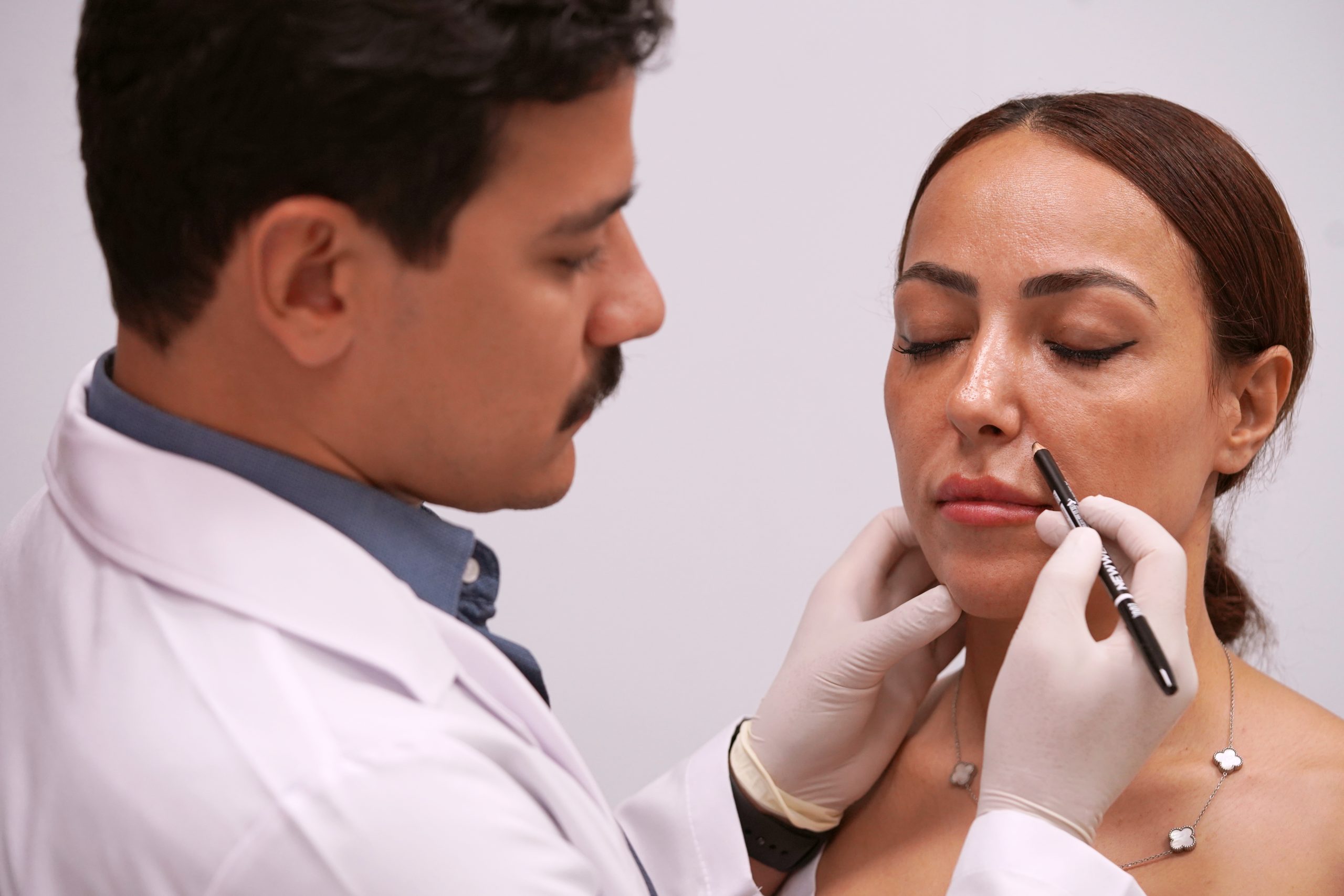
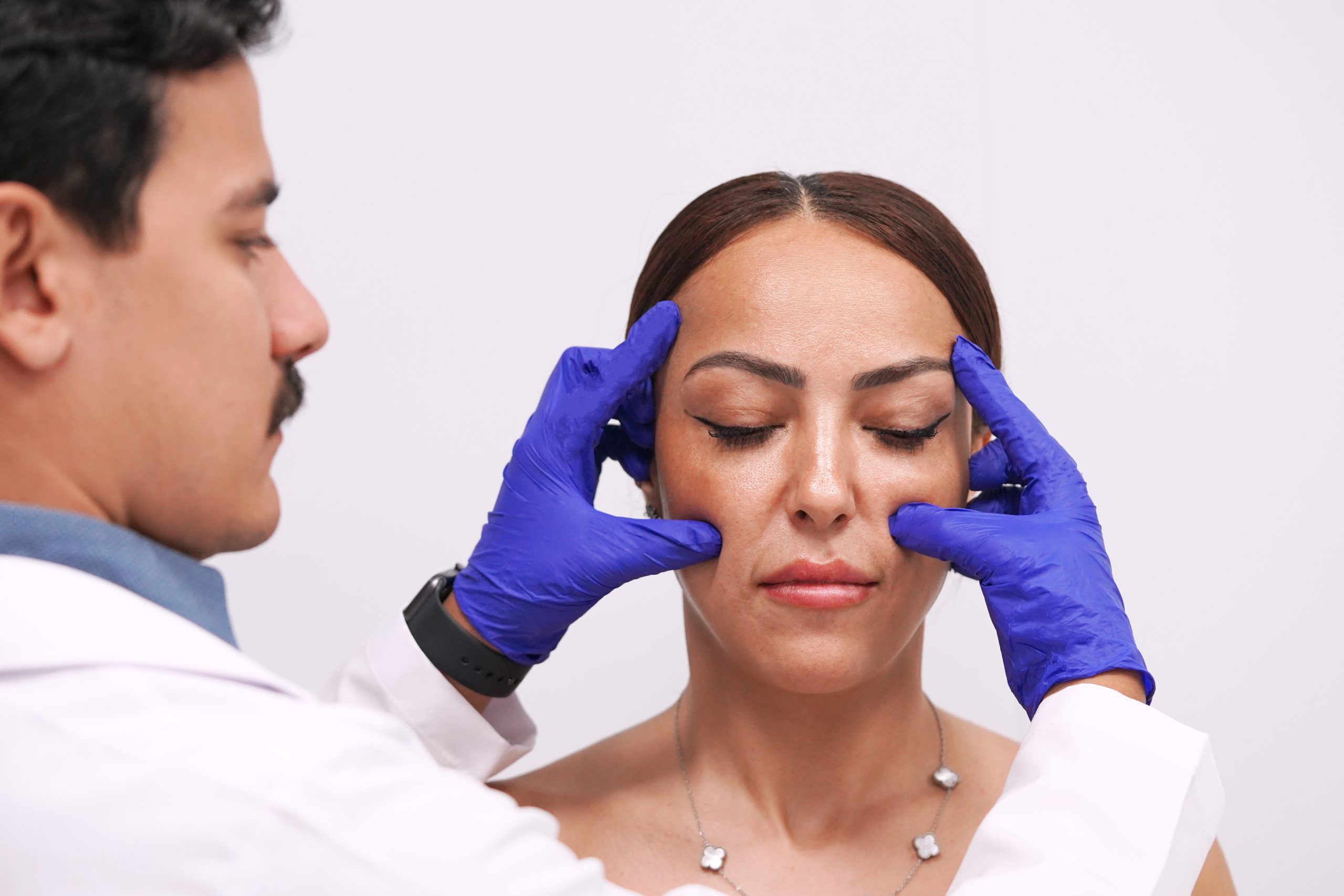
It is a face lift surgery performed on the upper face area, including the forehead and eyebrows. This operation aims to eliminate deepened forehead lines, reposition drooping eyebrows, and thus remove the traces of time by lifting sagging upper eyelids.
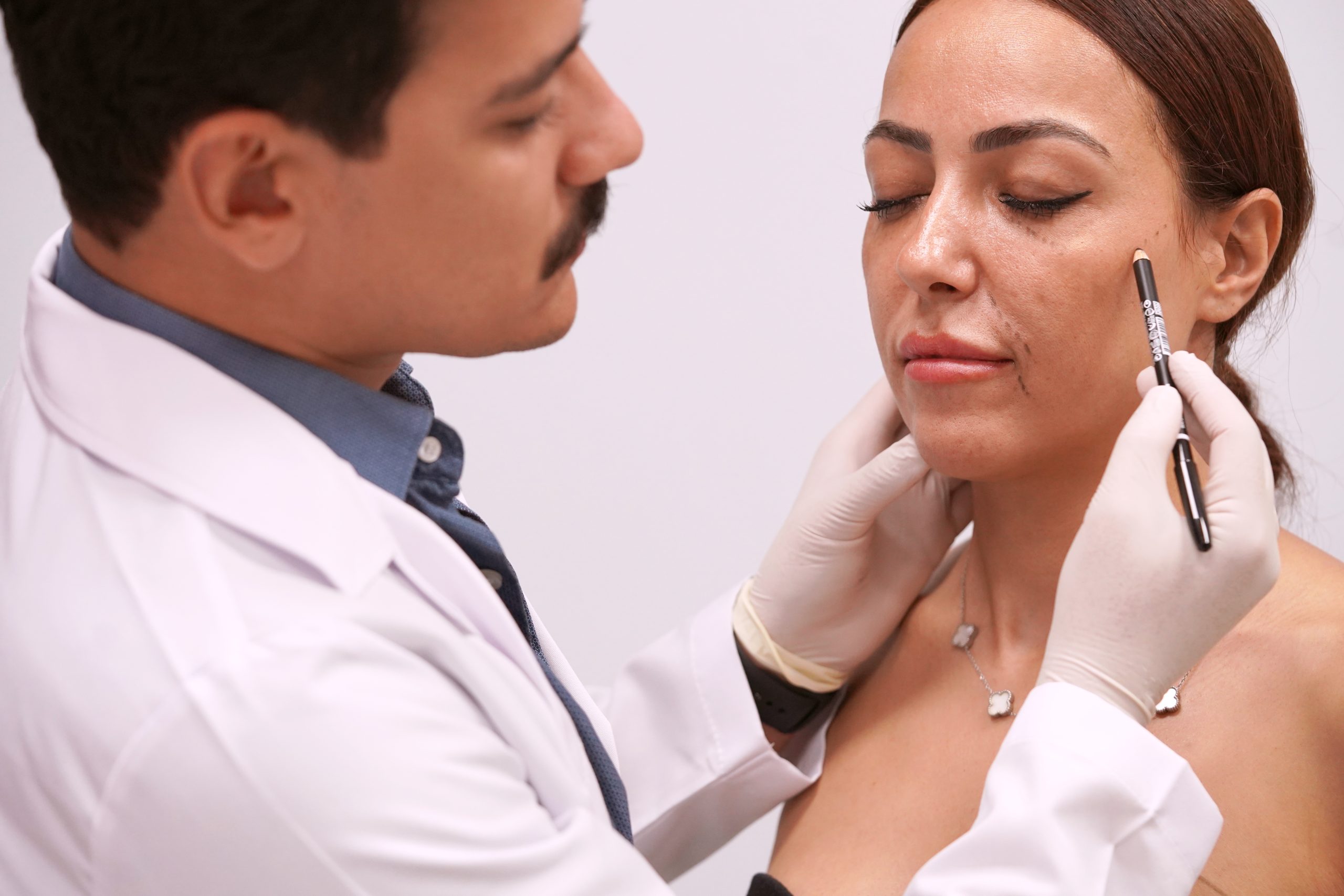
Within the scope of mid-face lift aesthetics, which can also be called cheek lift, the area between the upper mouth and the eyes is targeted. During mid-face lift surgery, the forehead or chin areas are not intervened. If the entire face is intervened, the operation is called full face lift surgery.
Mid-face lift surgery is performed under general anesthesia in approximately 2 hours. After the operation, recovery in the cheek area and rejuvenation of the patient can be achieved.

To the lower part of the face; The facelift surgery technique, which focuses on the jawline and neck, removes the sagging skin in the area and repairs the tissues, is called “lower facelift” or mini facelift.
This operation, which requires fewer incisions than the traditional full facelift surgery, stands out as an ideal option for men and women with signs of premature aging. It can be performed alone or combined with other facial aesthetic operations, or simultaneously with non-surgical facial aesthetic applications.

Prominent ear aesthetics, also known as otoplasty, is an aesthetic surgery that aims to change the shape, position and size of the ears so that they are in harmony with the face. Although prominent ears do not generally have a functional feature, it can be stated that there are many people who are uncomfortable with the shape, size and position of the ears, and this discomfort can cause psychological distress.
Protruding ear aesthetics can be performed at the age of 5 and above, when ear development is completed. It is known that in specific cases it can be applied as early as 3 years of age.
Protruding ear surgery, which is performed by people who have a wide angle between their ears and heads, whose ears are disproportionately large with their heads, and whose facial expression is negatively affected due to the shape of their ears, is among the aesthetic operations frequently preferred by women and men.
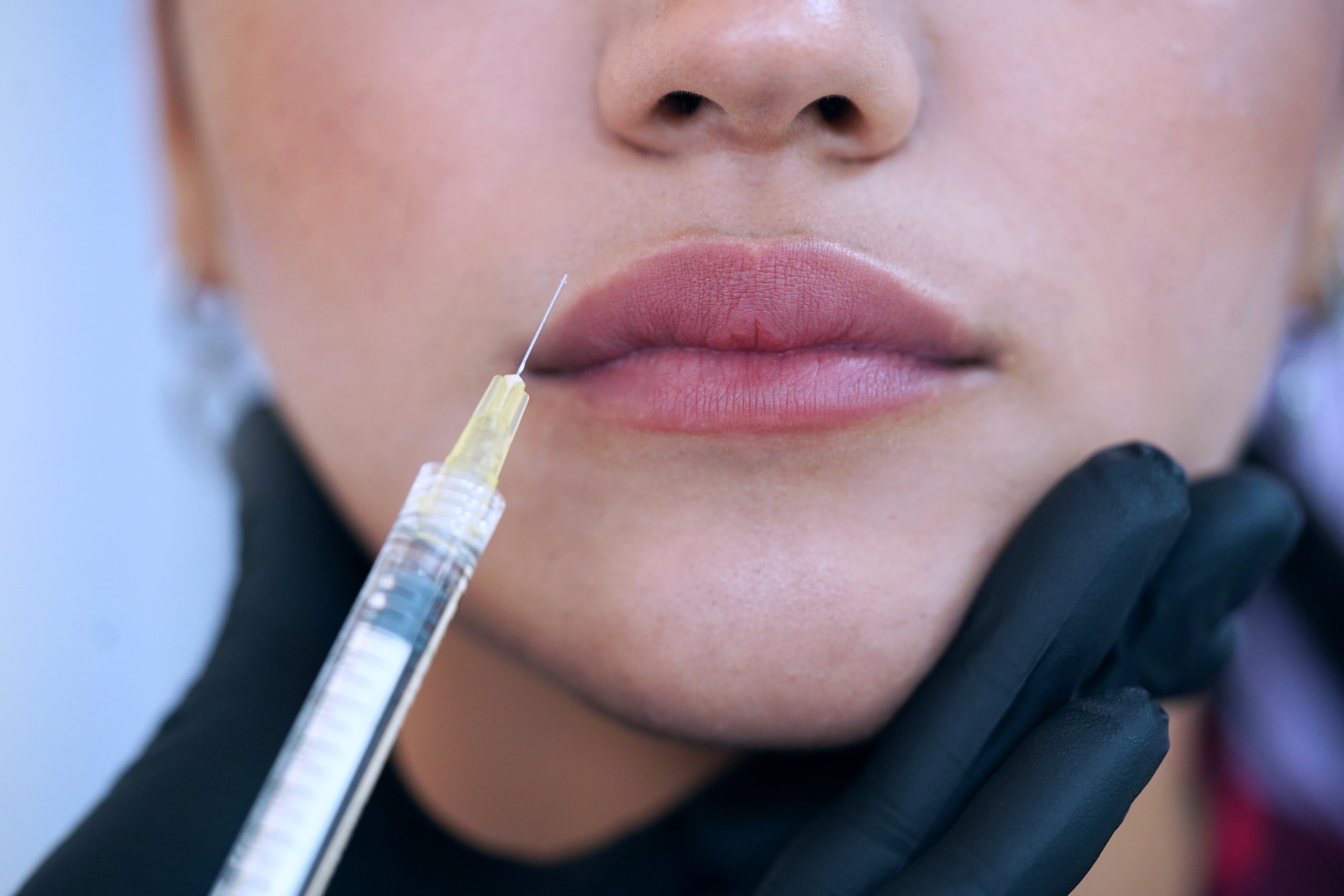
Lips are among the most noticeable parts of the face. Lip aesthetic surgeries may be used to reshape lips whose shape becomes unclear over time, loses volume, sags, or is too thick and distorts the facial proportions.
Lip aesthetic surgery, like all other facial aesthetic surgeries, is a procedure that must be planned individually. Lip aesthetic surgery provides permanent and successful results in solving problems that non-surgical lip aesthetic applications do not respond to.
Within the scope of lip aesthetic surgery, lip folds can be highlighted, the upper lip can be lifted, lips can be thinned and at the same time, lips can be thickened in line with the needs of the patients. It is possible to obtain permanent and natural-looking results with aesthetic lip surgeries.
Excess skin or bags around the eyes, where the signs of aging are most common in the facial area, can cause aesthetic concerns by causing the person to look tired, unhappy and older than they are. At the same time, the sagging that occurs can also cause functional problems and obstruct the person’s vision.
With eyelid aesthetics called blepharoplasty, upper eyelids that are droopy and cause the person to look old or obstruct peripheral vision due to excess skin, and lower eyelids that are baggy and have excess skin can be targeted.
During forehead lift surgery, which is performed to improve the appearance of wrinkles between the forehead and eyebrows, in addition to eliminating sagging on the forehead, eyebrows and upper eyelids, the forehead skin is stretched and excess skin is cut off. Forehead lift, which is among the operations performed in the upper face area; It occurs when the cause of sagging in the eyebrows or upper eyelids is the loosening of the forehead skin.
With age, the forehead skin begins to loosen and sag; At the same time, facial expression marks on the forehead deepen. This change in the forehead area. It causes downward movement of the eyebrows and upper eyelid in position. Forehead lift surgery can be performed both classically and endoscopically. Nowadays, with the development of medical technologies, endoscopic forehead lift surgeries have begun to be preferred.
Unlike the classical technique, it is possible to achieve a tighter forehead area, repositioned eyebrows and upper eyelids after endoscopic forehead lift surgery, which is performed by making multiple small incisions rather than a large incision. Forehead lift surgery can be performed alone or as part of facelift surgery.
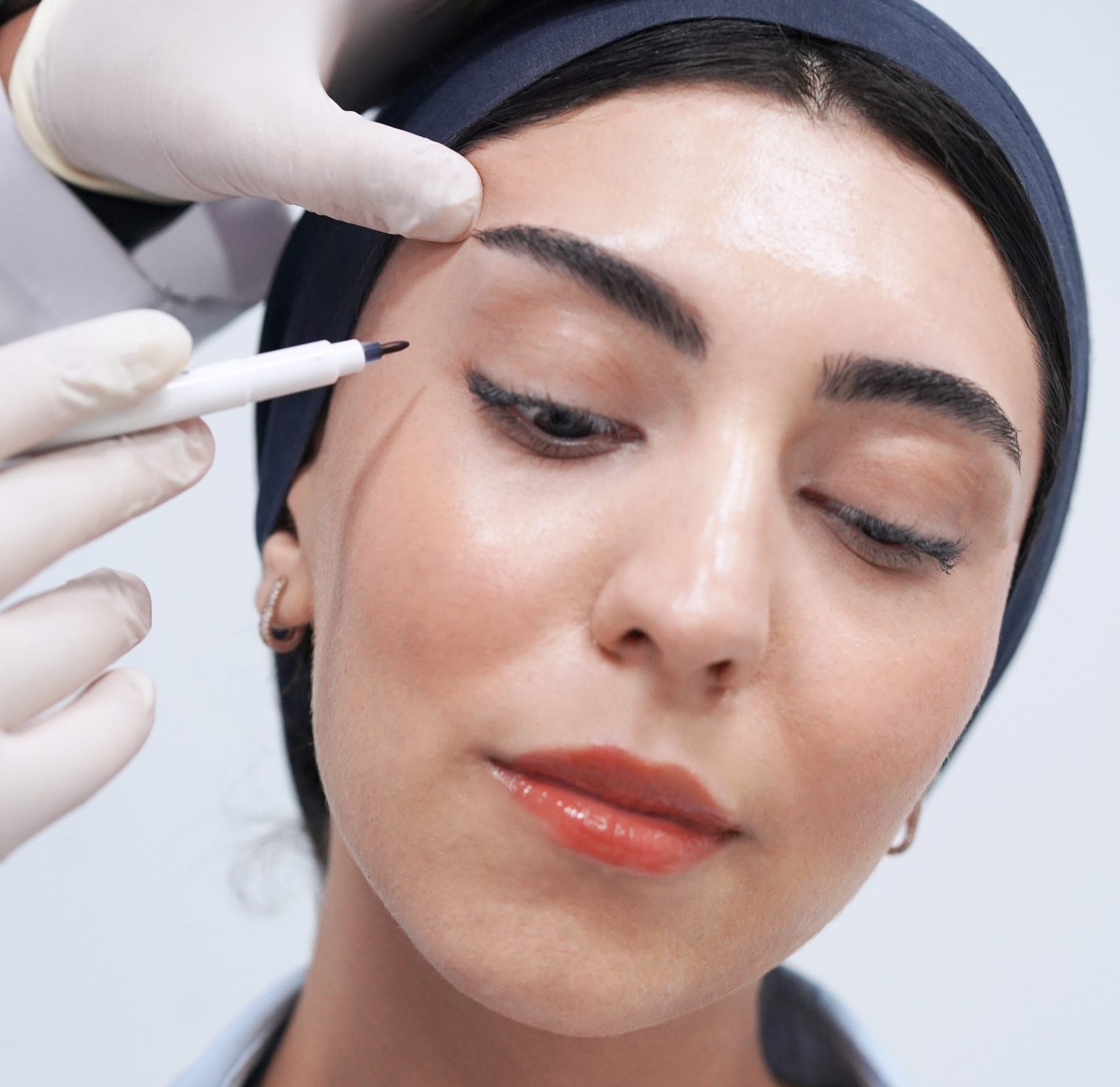
Low eyebrows can affect the appearance of the upper eyelids and make people look tired, angry and unhappy. Nowadays, eyebrow lift surgery can be performed with different techniques. Endoscopic brow lift method is more preferred for reasons such as preventing scar formation and keeping the healing process shorter compared to classical brow lift surgery.
Before eyebrow lift surgery, facial analyzes of the patients are performed and how much the eyebrows will be lifted is planned before the operation. Contrary to popular belief, having eyebrows that are too raised may not always lead to an aesthetic appearance. For this reason, when planning the operation, the appropriate eyebrow lift angle should be determined to best suit the person’s face.
Apart from brow lift surgeries , it is also possible to talk about the existence of non-surgical brow lift methods for selected patients whose sagging amount is low and whose skin has not completely lost its elasticity. If patient selection is made correctly, thread eyebrow lift (eyebrow lift) and injection application can provide effective results.
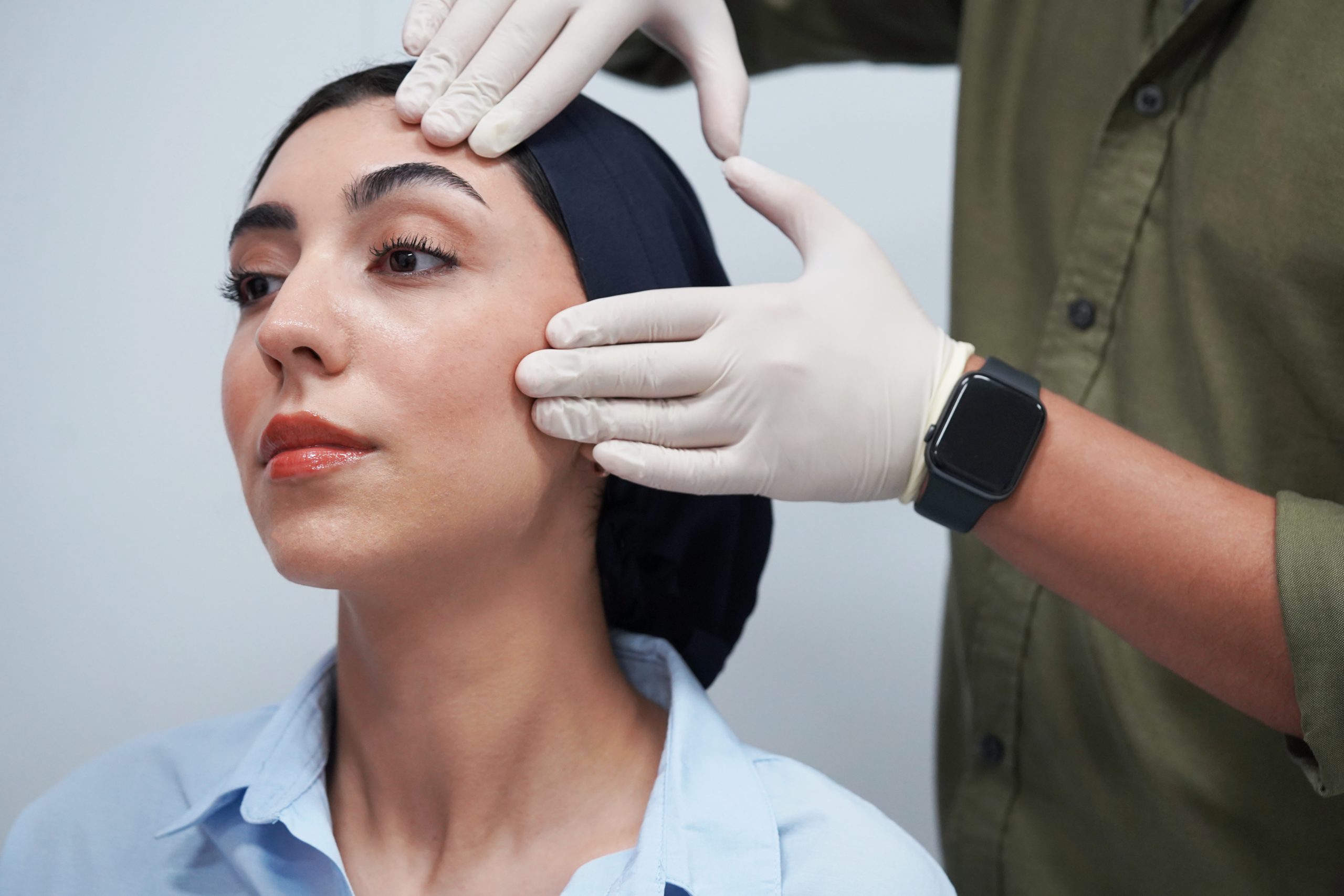
Bichectomy, also known as cheek thinning aesthetics, is among the facial aesthetic surgeries based on the principle of removing some of the bichat fat pads on the cheeks. Although everyone has fat pads, in some people the volume of these fat pads may be large and create a chubby impression in the facial area. This condition, which creates a roundness on the face and reduces the clarity of facial contours, can be eliminated with a bichectomy operation.
During the operation, small incisions are made on the inside of the cheek area and some of the fat pads are removed. Bichectomy, which can be applied to people who are in good general health, whose cheeks look swollen due to fat pads and who are not satisfied with their appearance, can be performed alone or in combination with different facial aesthetic operations.
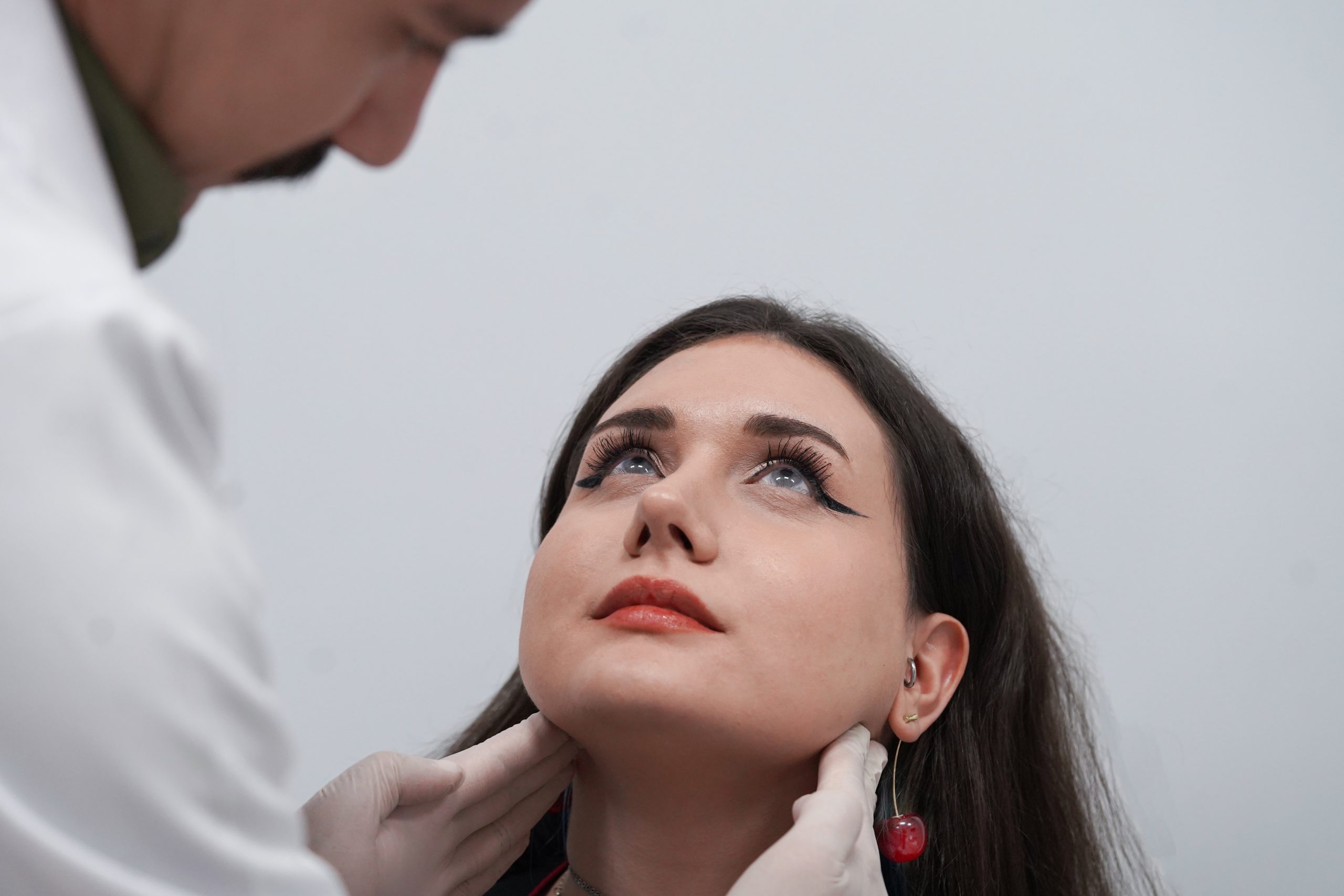
Neck lift surgery can be performed as a part of face lift surgery or alone. With neck lift aesthetics, which is performed on the principle of removing excess skin in the jawline and neck area that occurs with age and tightening the tissues in the area, the jowl area can be tightened, the loosened neck skin can be removed, the chin and neck line can be given an aesthetic appearance and the person can be given a younger appearance.
The operation, which is performed under general anesthesia, is completed in a period of 1.5 – 2 hours. When there is only fat accumulation in the neck area and the person is young; In other words, if the skin has not lost its elasticity, the appearance of the neck can be improved with liposuction alone.
Non-Surgical Facial Aesthetics
Non-surgical facial aesthetic procedures, which eliminate wrinkles, sagging and existing volume losses on the face without requiring surgical intervention, are among the widely preferred procedures due to their ease and ability to be performed in minimum time. This method, which is applied using various medical threads, basically covers facial area lifting procedures. In addition, botox and filler procedures, which are frequently preferred by many people, are among the aesthetic interventions performed without surgery. In addition, peeling and laser procedures for various blemishes, acne scars, wrinkles and freckles on the face can also be preferred as procedures that do not require surgery. These facial aesthetic procedures, which allow people to return to their daily lives more quickly, offer a more painless process than surgical operations.
Facial aesthetics can be performed both through surgery and medical applications. It is possible to achieve successful results with medical applications when the patients’ expectations, skin structures and needs are analyzed correctly during the planning phase, where patient selection becomes important.
With non-surgical facial aesthetic applications, which can be performed under local anesthesia and are within the scope of minimally invasive intervention, volume can be added to the lips and cheekbones, eyebrow lifting and almond eye aesthetics can be performed, facial contour and jaw line can be clarified, fine wrinkles can be eliminated, and a deep renewal of the skin can be initiated to prevent skin defects due to aging. recovery may be possible.
Non-surgical facial aesthetic procedures can be applied alone or in combination with facial aesthetic surgeries. The most frequently applied non-surgical facial aesthetics can be listed as follows:
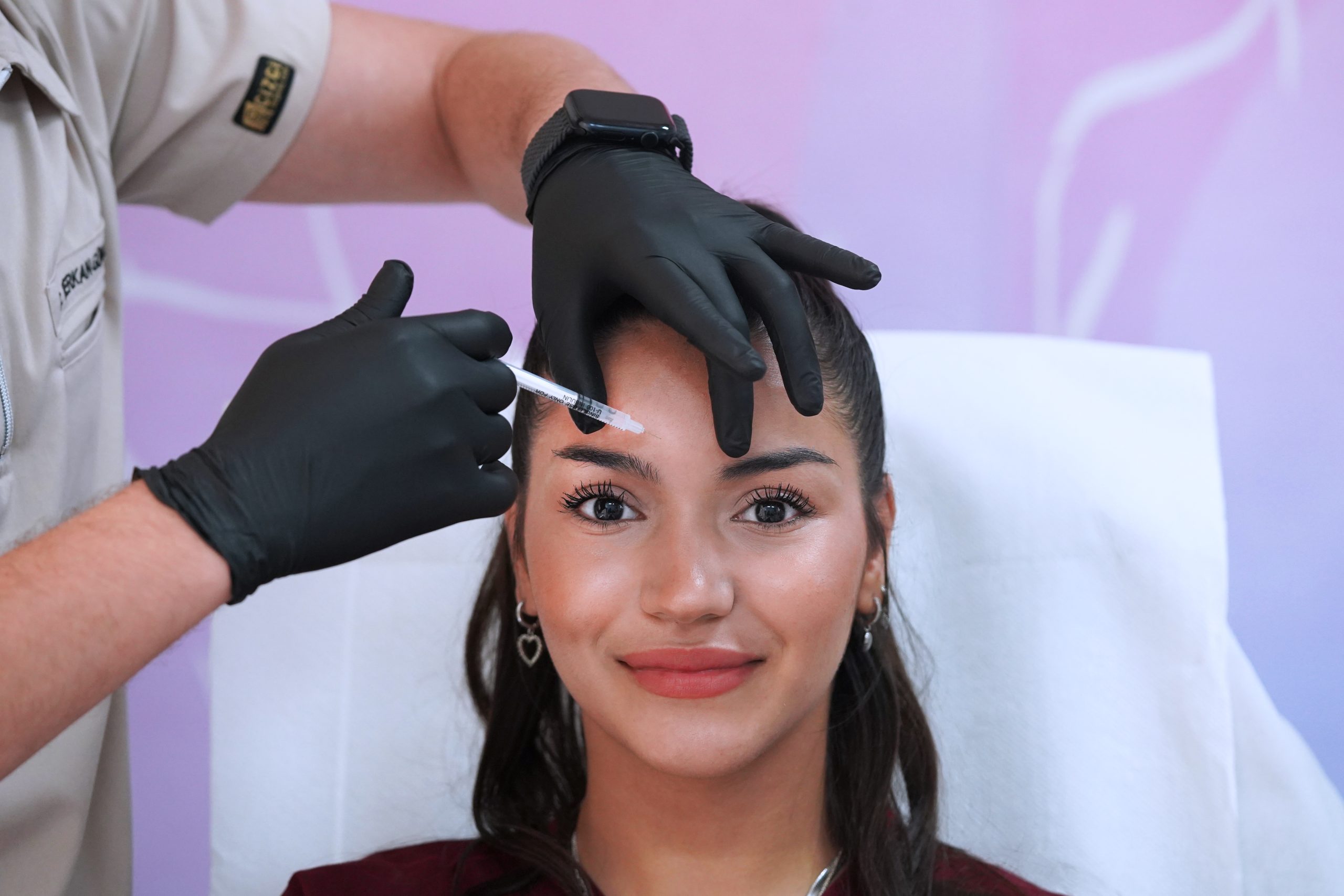
Injection is a drug that has been used for many years to treat wrinkles and lines on the face. Injection, which is a toxin produced from Colostridium Botulinum bacteria, is one of the non-surgical facial aesthetic techniques, and is also used in the treatment of health problems such as excessive sweating, severe muscle spasms, strabismus, chronic migraine and overactive bladder.
Unlike facial aesthetic surgeries, the injection effect lasts for a limited time. Although it varies from person to person, it can be said that the effect of the injection continues for around 4-6 months. The injection, which can be preferred for different purposes such as removing crow’s feet around the eyes, alleviating expression lines between the eyebrows, lifting eyebrows and eliminating fine wrinkles, is completed in a short time of approximately 10 – 15 minutes.
After the procedure, which is performed using very thin syringes without anesthesia, a period of 7 to 14 days must pass for the full effect to be observed. By neutralizing the muscles in the area where the injection is injected, it prevents the lines from being visible and helps the scars disappear due to the weakening of the muscles over time. However, as stated above, since the injection effect is limited, the application may need to be repeated at certain intervals.
Some people’s chewing muscles may be overdeveloped and this may cause an angular appearance in the lower part of the face. The prominence of this muscle, which connects the lower jaw and the cheekbone, causes a masculine appearance and aesthetic concerns, especially in women. In such a case, Botulinum toxin can be applied to temporarily block the nerve signals in the masseter.
As a result of this procedure, the face shape is balanced, the jaw line becomes thinner, and complaints such as headaches, jaw tension and teeth grinding can be prevented. Since the duration of effect of masseter injection is limited, patients may need to repeat the application.
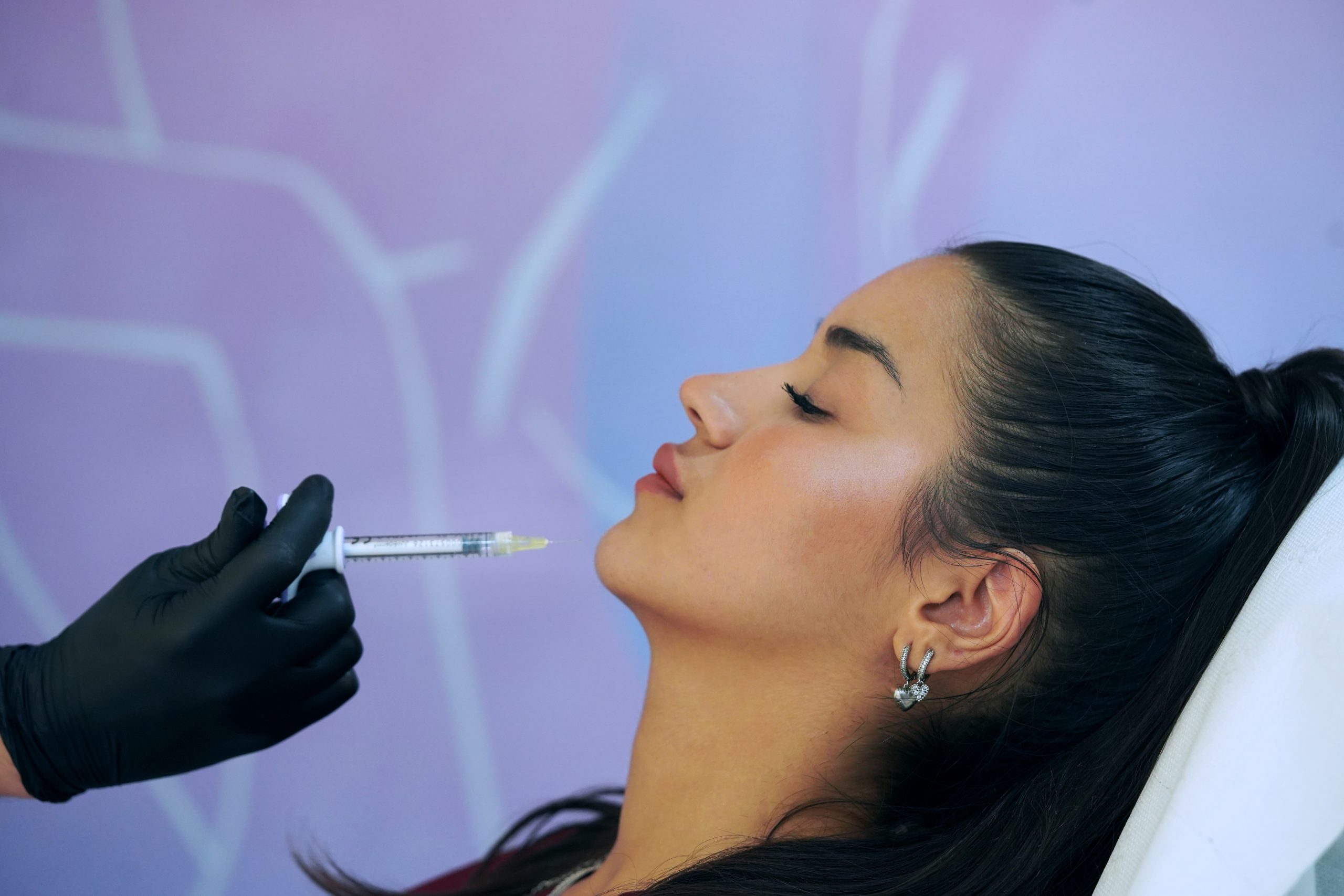
The non-surgical aesthetic application, which is performed to reduce the lines on the face that have become deeper over time and to restore the volume losses in the face, is called filler application. As subcutaneous fat begins to disappear due to aging, the muscles move closer to the skin surface, thus deepening expression lines.
In addition to aging, the effects of genetic factors, lifestyle and sun exposure also cause volume loss in the skin to become evident; It causes distortion of facial contours and deformation of facial parts such as lips and cheekbones. With filling applications;
- Volume can be added to the lips, lips can be plumped,
- The prominence of the cheekbones can be increased,
- Deep wrinkles and prominent lines on the face can be lightened,
- Volume can be added to areas that have lost facial volume,
- Dark circles under the eyes can be reduced when light filling is preferred.
People who want to look younger and have appropriate skin sagging can meet their expectations with thread facelift applications. If facial rejuvenation applications such as injections, fillers and mesotherapy are insufficient, but the criteria for face lift surgeries are not met, thread suspension applications can offer great comfort.
Rope suspension application, which helps eliminate sagging in the face and neck area, is classified as minimally invasive. In order to obtain a tighter skin, tissues can be mechanically lifted with protruding threads that stimulate collagen production in the skin. In patients selected for rope sling application;
- Clarifying the facial contour,
- Almond eye aesthetics,
- Correction of prominent ears,
- Lifting eyebrows,
- Correction of the jaw line,
- It can be preferred for different purposes such as tightening the neck skin.
During the rope sling application, also known as the French sling, no incisions are made on the skin as in plastic surgery operations, so there are no scars and the results can be observed immediately.
The patient’s skin structure, expectations and anatomical characteristics need to be evaluated before the rope suspension application, which can be described as the right choice for those who want to achieve tighter skin in a natural looking way.
As a result of aging, the production of collagen and elastin in the skin decreases, the fatty tissues in the skin disappear and the skin sags, causing the person to look older and tired. With the decrease in bone tissue, complaints increase and the shape changes in the facial oval can reach a disturbing level.
The threads used in the 6D star suspension technique, which have a 360-degree fishbone structure, allow the tissues to remain suspended for a longer time and at the same time make it possible for the skin to have a tighter and tighter structure. These threads, which have six sizes, lift the skin to the maximum level, making the person look 5-10 years younger after the application.
The effect of this technique, which can be applied for purposes such as eyebrow lifting, face lifting, defining the jaw line, tightening the jowl area, lifting the eyelids, neck lifting, can last for 2-3 years.
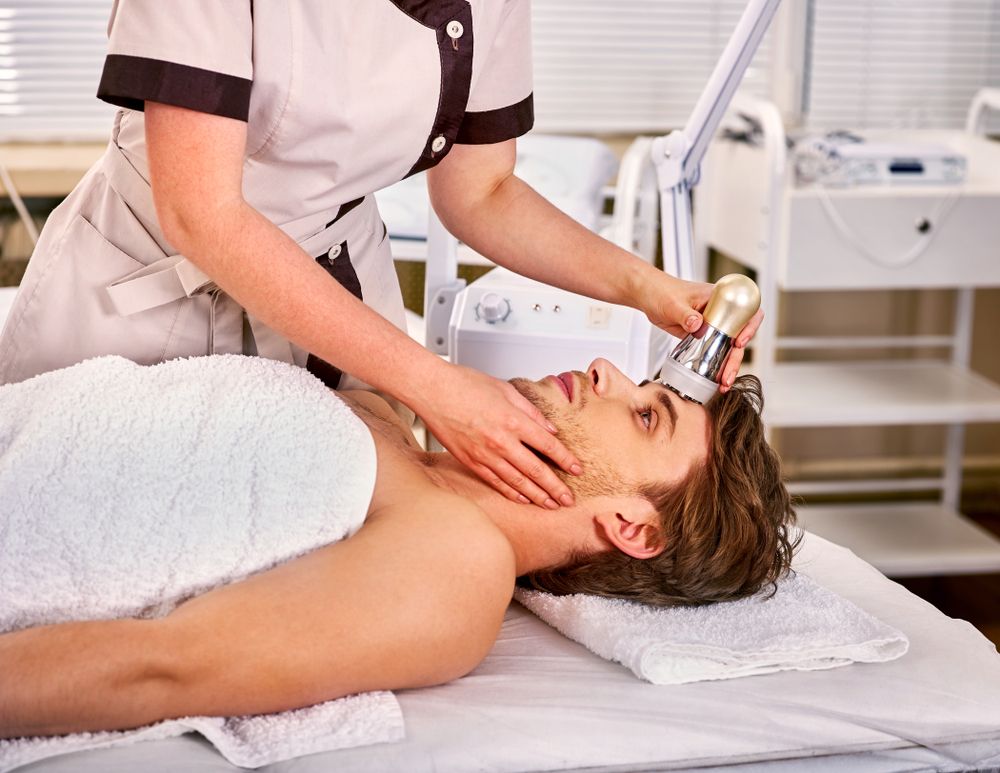
Ultherapy; It is a non-invasive method that removes wrinkles and lines in the neck, décolleté area, chin and eyebrow area, and improves the contours in the area where it is applied. It is based on the use of microfocus ultrasound therapy to increase collagen production in the applied area, and the use of ultrasound technology allows the tissue layers in the application area to be seen. Unlike laser, radio frequency and surgical applications, ultrasound energy is sent to the ideal depths of the tissue and rejuvenation begins from deep to the surface.
Golden Needle application, also called fractional radio frequency; It is carried out to rejuvenate and beautify the skin. This medical application, which has the effect of revitalizing the skin by reducing the appearance of spots, deformations and wrinkles that occur on the skin due to environmental reasons, genetic factors, sun exposure and aging, can be applied to different parts of the body and the face.
Golden needle can be preferred for different purposes such as removing skin cracks, correcting neck and jowl contours, removing bruises that cause a tired appearance in the eye area, and tightening skin pores. The number of sessions may vary depending on the needs of each patient. Each session lasts approximately 30 to 40 minutes. The effects begin to be seen as of the first session.
Facial mesolifting is among the most frequently applied non-surgical facial aesthetic applications to eliminate wrinkles and minimal sagging on the face. In this method, different minerals and vitamins are prepared and injected into the skin to nourish the skin, minimize skin imperfections, eliminate wrinkles that start with age, and provide healing from deep to the surface.
People’s needs are taken into consideration when preparing mesolifting cocktails. Session planning is done individually; Sessions are completed in approximately 20 minutes. Facial mesolifting can be combined simultaneously with different medical procedures applied within the scope of non-surgical facial aesthetics.
Face Thinning and Reduction Aesthetics
Facial slimming aesthetics and reduction procedures include applications to improve the appearance of overly full or wide facial forms. These procedures are performed by removing or reshaping the bone, muscle and fat tissues on the face. Facial muscles can be genetically large in some people, causing the face to appear wide. In interventions aimed at thinning, various operations are performed on these muscle tissues. Facial reduction aesthetics is performed by removing or reshaping bone and fat tissues on the face. In this procedure, the jaw and cheek bones are generally reduced and the fatty tissues that disrupt the general facial structure are removed. It can be preferred by people who want to make their facial features clear and improve existing disproportions.
How Many Days Does Facial Surgery Take to Heal?
Recovery time after facial surgery may vary depending on the procedure performed and the person’s body characteristics. Also during this period, some symptoms such as swelling, bruising, pain and tenderness may be observed. Sensitivity in sleeping positions and medications given contribute positively to the healing process. At the end of the first week, the person can return to daily life, except for heavy activities. Edema and bruises on the face may improve in approximately the second week. However, the healing process may take an average of 4-6 weeks to complete, although it may vary from person to person.
Is Facial Aesthetics Permanent?
The permanence of treatments applied to the facial area may vary depending on the type of treatment, the person’s age, skin structure and similar factors. In surgical facial aesthetic procedures, permanent results are usually obtained. For example, procedures such as facelift, rhinoplasty or ear aesthetics offer long-lasting results. However, since the aging process continues after these procedures, the skin and tissues may sag or deform again over time. However, non-surgical facial aesthetic procedures generally provide shorter-term results. Procedures such as botox injections, filling procedures, peeling and laser treatment are among the interventions that provide temporary results. These operations may need to be renewed after a certain period of time.
Who is Facial Aesthetics Suitable for?
Any woman or man who is legally over the age of 18 can opt for facial aesthetic procedures. However, it is not recommended to make arbitrary interventions at an early age, depending on the instructions of the doctors. If there is a concrete problem affecting the quality of life in the facial area, it is recommended to apply the relevant treatment. In addition, some psychological elements are also extremely important in such operations. The person must have made a clear decision mentally and feel ready for treatment. Treatment and recovery processes must be taken into consideration and action must be made with a clear decision. Expectations should be determined correctly and it is recommended to discuss with doctors whether the physical structure is suitable for the procedure. On the other hand, it is important to know that botox and filler procedures that require continuity must be repeated at certain intervals. People who want to make the relevant transactions permanent for many years can apply for renewal processes at regular intervals depending on the type of transaction.
Frequently Asked Questions About Facial Aesthetics
Although sagging in the upper eyelids is functional because it can obstruct vision, it can be stated that other facial aesthetic surgeries are performed for cosmetic purposes. For this reason, each patient's reasons and situations for applying for facial aesthetic operations may vary.
In the most basic sense, it can be said that facial aesthetic operations are performed if the person is uncomfortable with his appearance and wants to improve his appearance. As with all surgical interventions, the general health status of the patients will be the most fundamental factor in making the decision for surgery.
By allowing patients to express their expectations clearly during the planning process, a single or combined surgery can be planned individually. The planning process is also an important requirement for non-surgical facial aesthetics applications. Failure to plan medical procedures such as eyebrow lift, lip filler and nose tip filler may result in an unnatural appearance.
The techniques to be applied during surgeries are also determined in line with the needs of the patients. Unlike facial aesthetic surgeries, non-surgical facial aesthetics procedures do not require general anesthesia; Applying creams with local or analgesic effects to the application area will be sufficient. Mostly, no anesthesia method is used.
Facial aesthetic surgeries, like all surgeries, carry certain risks. Complications such as anesthesia risks, bleeding, deep vein thrombosis, facial nerve injuries, infection, edema formation, problems in the wound healing process, skin color changes, facial asymmetry as a result of the procedures performed, and the need for revision are possible.
If the scars cannot be hidden due to the nature of the operation, they will fade over time and will not be disturbingly obvious. If non-surgical procedures are used for facial aesthetics, no scar formation will occur.
Contrary to popular belief, men, as much as women, demand facial aesthetic applications and consult Plastic, Reconstructive and Aesthetic Surgery specialists to eliminate problems that cause aesthetic concern.
After the operations, patients can get rid of tired and unhappy facial expressions, have a tighter complexion by removing sagging skin, have more proportionate lips, look younger with prominent cheekbones, get rid of sagging eyelids and have a livelier look. The resulting change may vary depending on the operation or operations to be performed.
Meet Our Doctors

